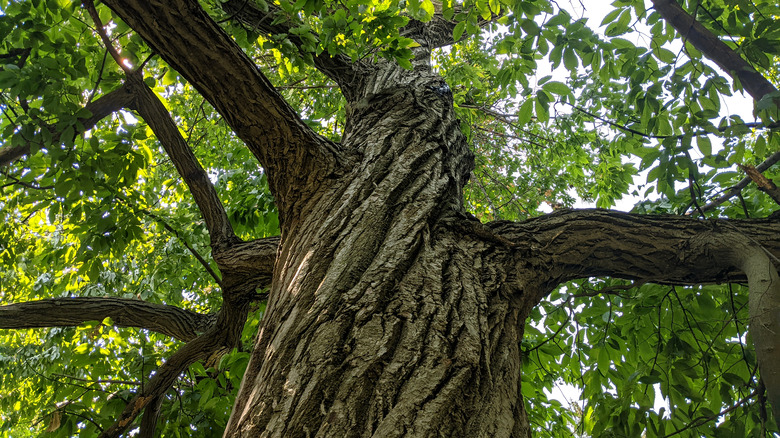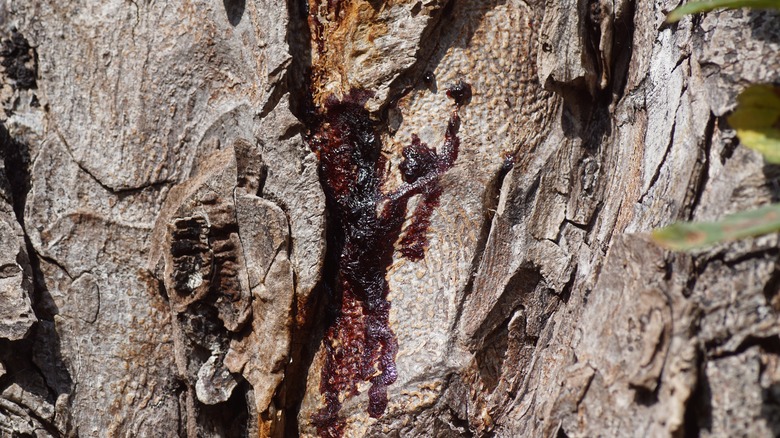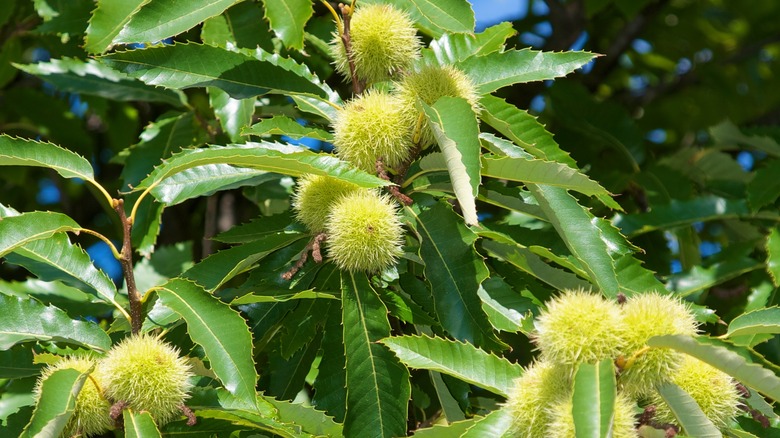Why This American Tree Rarely Makes It To Maturity
The United States is home to about 228 billion trees, which accounts for 10% of the forests on Earth, according to the 8BillionTrees.com website. That comes to nearly 820 million acres that are considered to be forestland. Conservation efforts have led to a rise in the number of trees in the U.S., but there is one tree that has experienced a decline over the years, and that is the American chestnut tree.
The U.S Department of Agriculture (USDA) explains that at one time, the American chestnut tree was considered a "giant of the eastern U.S. forests" with some towering at 100 feet tall. Unfortunately, the trees struggle to survive because of diseases that kill them before they can fully mature. The trees first succumbed to what the USDA calls "ink disease" in the early 1800s. Ink disease, or Phytophthora cinnamomi, is a bacteria found in overly wet soil, and it destroys chestnut trees by causing the roots to rot, per The American Chestnut Foundation (TACF).
A more serious disease wiped out American chestnut trees
Another disease responsible for killing young chestnut trees is a condition called blight. Chestnut blight is caused by the Cryphonectria parasitica fungus, which was introduced to the U.S. via imports from Asia. Blight is a fast-acting disease. Britannica reports that it was first noticed in 1904, and by 1925, it had all but destroyed the chestnut tree population. It not only wiped out American chestnut trees, but it destroyed many in Canada as well.
Unlike ink disease that kills the trees from the roots, blight makes its way to the center of the tree via tiny cracks in the bark. Once it makes its way to the living center of the tree, called the cambium, the trees attempt to control the fungus by surrounding it with a thick growth. As the growth spreads, it makes its way to the bark, which is recognized by what the American Society of Microbiology (ASM) refers to as cankers. Over time, the affected bark falls away, exposing the inside of the tree. Meanwhile, the fungus produces oxalic acid that helps it eat away at the cambium. As the fungus works its way around and through the cambium, it essentially chokes and destroys the tree before it has a chance to mature. To make matters worse, the fungus spawns spores on chestnut tree bark that scatter through air and water, affecting other trees.
Efforts to save the American chestnut tree
There is a growing effort to save chestnut trees, and experts think one way to do that is by helping the trees fight blight. One method is with biotechnology that involves controlling blight by engineering chestnut trees with genes that blunt the growth of oxalic acid. In addition, young chestnut trees are bred with blight-tolerant trees to create a new generation of trees that are able to resist the disease. Scientists are also attempting to control blight by injecting it with a virus that makes it less deadly, which could theoretically help chestnut trees fight the disease on their own (via TACF).
These endeavors appear to be working, and TACF reports that they have successfully planted "thousands of transgenic blight-tolerant" seedlings in several locations across the country. That said, it will take them decades for them to reach maturity and produce seeds, but the organization states that it is hopeful that it can restore the chestnut tree to its former glory.


